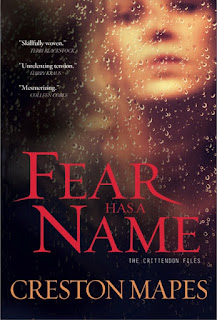Here’s what I need to tell him, and I thought I’d kill two birds with one stone and share some of these insights with you, too.
- The story needs to begin right in the middle of an intriguing, tension-filled moment. Pick right up smack dab in the middle of the situation. Back story can come later, if at all. Who the characters are can come later. What they look like can come later. You must quarantine the reader in the first few pages of the book or you’ve lost him.
On about page four of my friend’s manuscript, there was finally some dialogue and some conflict. “That is where his book needs to start!” I said aloud. The details can come later! His first four pages were all back story. Granted, those pages included a bunch of good ideas and it will all make for a good book. But all of that back story needs to be shown, not told, as the story unfolds. That brings me to my next point. - Please, please, show and do not tell, because if you tell, no serious fiction editors are going to want to publish your book. This might take you awhile to learn, but once you get the hang of it, it becomes habit.
Which gives the reader a better, more vivid and emotional picture of what the character is doing and feeling:
He was nervous and thought about just leaving.
Or…
He drummed his fingers on the table, checked his watch and scanned the room to see if anyone would notice if he disappeared.
The later shows. The former tells.
The whole book needs to show. Just work a sentence at a time, showing. Soon you’ll have the hang of it. And keep adding new things. Don’t just keep rehashing the same old plot. Keep the story alive with new twists and turns that put readers on the edge of their seats.
As for the back story you wanted to include right up front…much of that can be woven in later, throughout the manuscript, as you are showing the reader what happens, like a mesmerizing movie on the big screen. - Write from one point of view (POV) at a time.
I need to tell my friend that he needs to choose one character and to write from that character’s POV for the entire scene or chapter, then switch to another character’s POV. It’s as if you are that character and you are standing behind a video camera. You can see and hear what’s going on around you, but you cannot read other peoples’ minds. You can only write about what you see and hear and what you taste and smell.
There will be more than one POV character. In the novel I’m writing now, I’m writing different scenes and chapters from the POV of 5-7 different characters. It’s a whole lot of fun getting into the mind of a bossy female antagonist, or in the head of an unsuspecting villain, or in the POV of a modern day hero. Again, get POV down and you’ll have mastered one of the top requirements in writing publishable fiction. - Avoid clichés.
Create unique names. Some of the favorites in my novels have included Everett Lester, Twila Yonder, Zane Bender, Gray Harris, Chester Holte, Hudson Ambrose, and Granger Meade. This is important. It sets your book and characters apart.
Create unique storylines. If it’s been done too often and we can predict what’s going to happen, as they say in the Bronx, forgetaboutit! When you’re at a turning point in the book, think up five to seven options of what could happen, and choose the most flabbergasting one! Remember, tension on every page is what you want to keep pulling the reader along with you! - Don’t write too much.
I’ve passed my 500 word limit!
I hope you’ll read my thrillers and connect with me via my website, Twitter or Facebook.
 |
| About the Author |
Creston Mapes is the author of Fear Has a Name, Nobody, Dark
Star, and Full Tilt. A journalist, copywriter, and editor,
he works from his home-office in Atlanta for some of the nation’s top media
companies, Christian ministries, and nationally-recognized corporations. His
early years as a reporter inspire many of his novels. Creston studied
journalism at Bowling Green State University in Ohio, and began his
writing career 30 years ago.
How Far Would He Go To
Keep Them Safe?
It was more than a
break-in. More than a stalking. It was personal. When a stalker
targets his family, journalist Jack Crittendon must uncover who the person is
and what his motives are—if he is to protect the ones he loves. It will lead
Crittendon into a world of behind-closed-door secrets and faith gone awry, as
does his investigation of a missing pastor, whose apparent suicide is more than
it appears. Each move Crittendon makes weaves him tighter and tighter into a
web of lies, greed, hypocrisy, sin, and danger. He believed he’d never give in
to feareHAnd it leads to. But that was before. And holding on to his faith
won’t be easy. Nor will keeping his family safe, and ending the terror. Because
that might require him to step over lines he never dared to cross.
www.CrestonMapes.com


